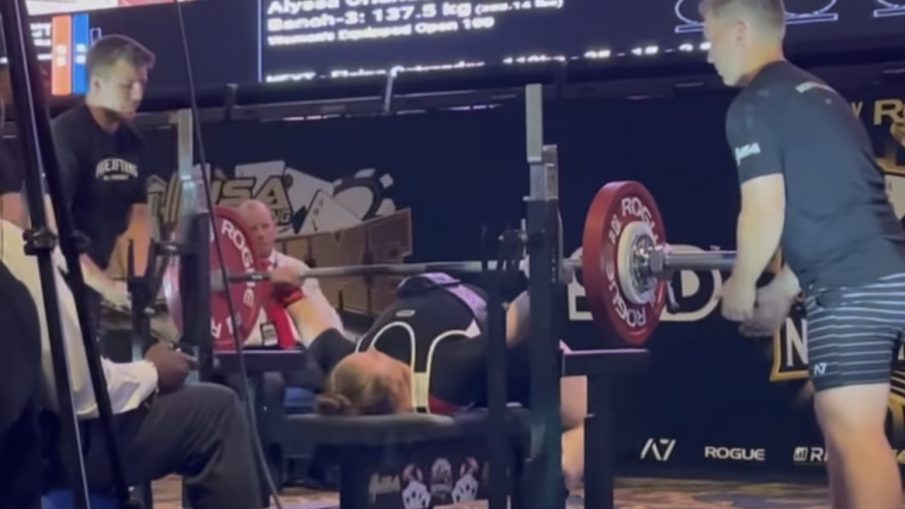Written by: Kevin Cann
This is a hotly debated topic in the lifting world and I feel that it always has been. Should you bench in a straight line, or should you push the bar back towards the rack? However, you decide to do it, you need to be sure that your accessory work is building the right areas.
First, when you read the articles of those arguing for a bar path where the bar goes back they like to use the example of Kaz to show how the best did it. This example was taking at a meet and under world record numbers. If you watch the video, it is an extremely hard lift. There is going to be technical breakdown under these conditions. Kaz also blew off his pecs more than once. At the end of the day, most of you aren’t Kaz either.
Under maximal weights, research has shown that the anterior delts and the triceps are prime movers with the pecs being a synergist. This means that the pecs are helping the delts and triceps. Under submaximal weights this is different as the pecs are a prime mover under submaximal weights.
When we press back towards the rack we increase internal rotation at the shoulder joint and rely more heavily on the pecs and delts and less on the triceps. This may be preferred from the high frequency comp lift circles due to the amount of submaximal benching they do causing a discrepancy between arm strength and pec strength. However, this is not ideal as the shoulder is the most injured joint in the bench press and added internal rotation will increase that risk.
When our triceps are stronger than our delts we will see the bar path move in a straighter line. This decreases shoulder internal rotation and requires us to push the bar a shorter distance. With maximal effort work once per week and focusing the majority of the volume on the triceps, we can develop strength in the right places to straighten out the bar path, save our shoulders, and press more.
You could read this and say, “Well if my delts are stronger shouldn’t I use them?” There is another piece to this and that is the back. When we bench press, we want to drive the upper back down into the bench. Those forces then get redirected into the barbell through our arms. This is similar to jumping.
When we jump, we push our feet down into the ground. The forces are then redirected and spring us upwards. These forces go straight down and then straight up. If we want to jump the highest, we will jump straight up. Having any horizontal displacement will decrease our abilities to use that force.
We practice this through variations such as a dead stop bench press as well as when we do our dynamic effort bench work. We bring strong triceps into this and we develop the skill of benching. We drive the upper back down into the bench to propel the arms straight up, and because we worked our triceps hard, they take over and work with that force all the way through lockout.
Training needs to be where we work on and develop this execution. If the focus of the program is all submaximal bench work, it will be difficult to get a straight bar path. I think this makes it easier on coaches to say to push back towards the face. At the end of the day for coaches to make money they need to coach a significant amount of people. Can’t sit there and teach all of them how to train and understand concepts (chances are the coaches don’t understand either). It takes very little time to send out some high frequency comp lift program and then find ways to sound smart and argue your reasoning for Olympic style squatting in powerlifting as well as a bench press path pushing back towards the rack. This is how most beginners execute the lifts.
You will then get thousands of people doing this and a few are bound to have some big numbers and there is all the proof that the internet needs that this is the best way to coach the bench press. I will assure you; it is not.
For those that say, “Well it worked for me.” If you were not doing accessories hard or targeting the right areas and then increased your bench frequency, you increased your work capacity, so your bench went up. This will work until it doesn’t. Unless you are one of the outliers, you will be leaving weight on the bar. Even if you are an outlier, at some point you will need to train your weaknesses to make progress.

